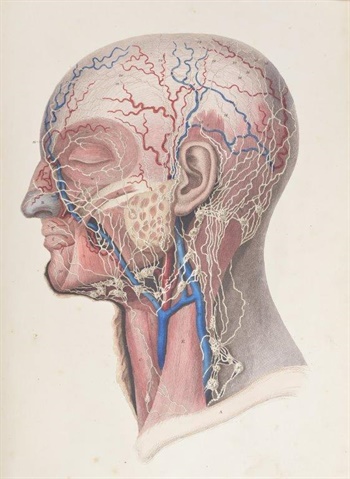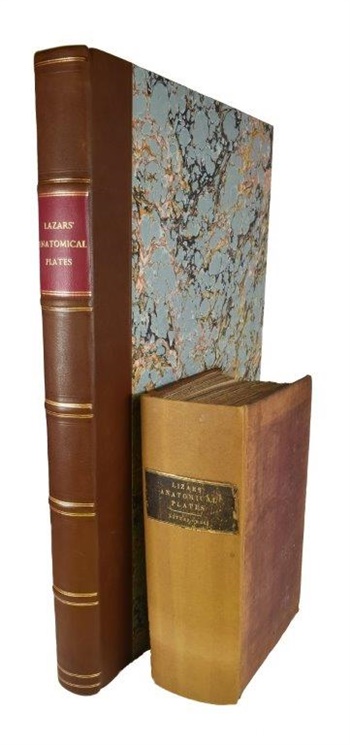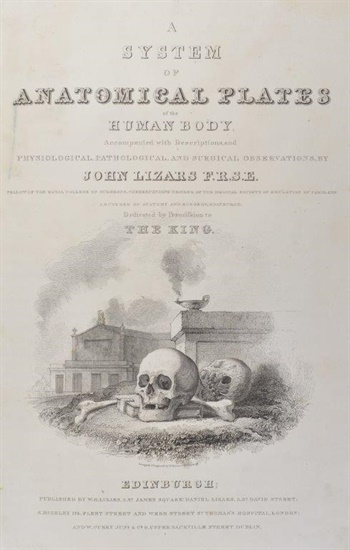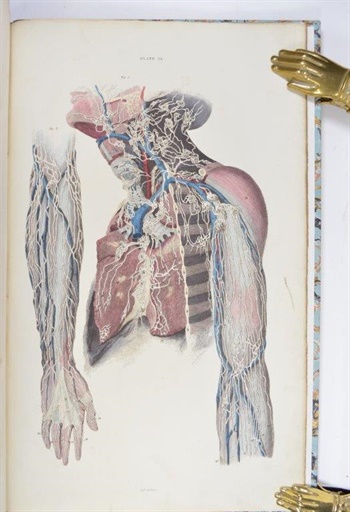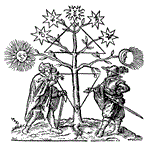Book Details
LIZARS (John). A System of Anatomical Plates of the Human Body; Accompanied with Descriptions, Physiological, Pathological & Surgical Observations.1822
Edinburgh: Printed for Daniel Lizards, First edition, 2 vols., 8vo text volume (230 x 140 mm) consisting of 12 parts each with a separate title and pagination, folio atlas volume (455 x 285 mm) containing an engraved title, dedication and 4 page table of contents followed by 101 hand-coloured lithographed plates most with tissue guards, plates generally bright and clean (plate 62 with marginal repairs), upper blank margin of title page with damp spots, fore-edges of content leaves a little frayed at fore-edges, text volume bound in original cloth, neatly rebacked with original spine label (rubbed), atlas volume rebound in recent quarter calf, marbled boards, spine lettering piece. A very good set of this most important work, in the de-luxe edition with hand-coloured plates, the text volume being particularly rare. "This superb atlas is certainly one of the most elegant works of the nineteenth century. The 101 lithographs were drawn by the author and his brother, William Home Lizars (1788-1859), from the author's dissections. Lizars was a pupil of John Bell and served as a naval surgeon before becoming professor of surgery at the Royal College of Surgeons in Edinburgh. Lizars developed a great reputation as a teacher and was also a bold and forthright surgeon. He made a number of original contributions, was a pioneer in performing ovariotomies in Europe, and he clearly demonstrated the value of abdominal exploration as a diagnostic procedure. However, he was somewhat ahead of his time and received criticism for exploring new surgical techniques, although later many of his new techniques became widely accepted. Lizars possessed great talent but his potential was never fully realized perhaps because of a continuing feud with another prominent surgeon of his day--James Syme. Lizars was an active writer and prepared many papers on such subjects as hernia, lithotomy, and hemorrhoids." (Heirs of Hippocrates). Cushing, L313; Waller, 5950; Wellcome III, p. 531; Heirs of Hippocrates, 1436.
Stock #41744

